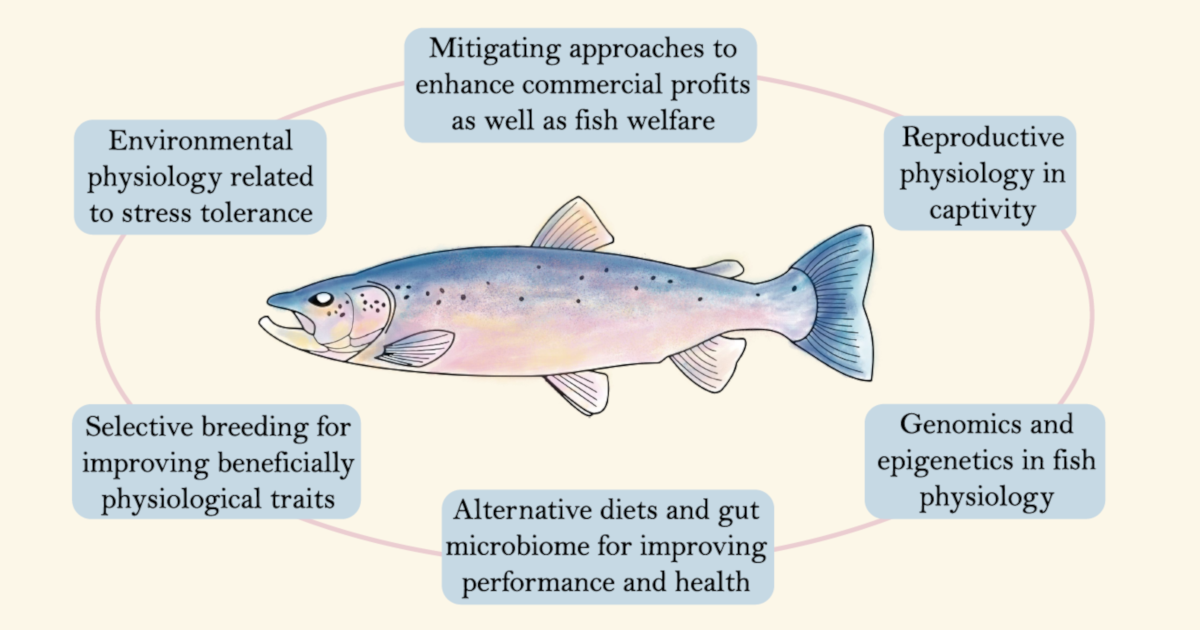New Insights into Fish Physiology-Applications Focus: Challenges and Mitigations
A special issue of Journal of Marine Science and Engineering (ISSN 2077-1312). This special issue belongs to the section "Marine Biology".
Deadline for manuscript submissions: closed (30 June 2022) | Viewed by 23984

Special Issue Editors
Interests: marine biotechnology; germ cell biology; sterility; reproductive endocrinology
Special Issues, Collections and Topics in MDPI journals
Interests: algal toxins; biosynthesis; sterolysin; karlotoxin; fishkill
Special Issues, Collections and Topics in MDPI journals
Special Issue Information
Dear Colleagues,
This Special Issue aims to convey the latest progress in applied aspects of fish physiology with particular commercial and laboratory species interests. We would like to invite review and original research manuscripts that contribute knowledge to, among others, the following topics:
- Selective breeding for improving beneficially physiological traits;
- Alternative diets and gut microbiome for improving performance and health;
- Reproductive physiology in captivity;
- Environmental physiology related to stress tolerance;
- Genomics and epigenetics in fish physiology;
- Mitigating approaches to enhance commercial profits as well as fish welfare.
Our sincere intention is to develop this Special Issue to the extent that it will exceed our classical knowledge of fish physiology and provide valuable insights to resolving physiological problems and accurately projecting the physiological responses in commercial and laboratory settings.
Prof. Dr. Ten-Tsao Wong
Prof. Dr. Allen Place
Guest Editors
Manuscript Submission Information
Manuscripts should be submitted online at www.mdpi.com by registering and logging in to this website. Once you are registered, click here to go to the submission form. Manuscripts can be submitted until the deadline. All submissions that pass pre-check are peer-reviewed. Accepted papers will be published continuously in the journal (as soon as accepted) and will be listed together on the special issue website. Research articles, review articles as well as short communications are invited. For planned papers, a title and short abstract (about 250 words) can be sent to the Editorial Office for assessment.
Submitted manuscripts should not have been published previously, nor be under consideration for publication elsewhere (except conference proceedings papers). All manuscripts are thoroughly refereed through a single-blind peer-review process. A guide for authors and other relevant information for submission of manuscripts is available on the Instructions for Authors page. Journal of Marine Science and Engineering is an international peer-reviewed open access monthly journal published by MDPI.
Please visit the Instructions for Authors page before submitting a manuscript. The Article Processing Charge (APC) for publication in this open access journal is 2600 CHF (Swiss Francs). Submitted papers should be well formatted and use good English. Authors may use MDPI's English editing service prior to publication or during author revisions.
Keywords
- applied fish physiology
- selective breeding
- alternative diets
- environmental physiology
- genomics and epigenetics
- gut microbiome
Benefits of Publishing in a Special Issue
- Ease of navigation: Grouping papers by topic helps scholars navigate broad scope journals more efficiently.
- Greater discoverability: Special Issues support the reach and impact of scientific research. Articles in Special Issues are more discoverable and cited more frequently.
- Expansion of research network: Special Issues facilitate connections among authors, fostering scientific collaborations.
- External promotion: Articles in Special Issues are often promoted through the journal's social media, increasing their visibility.
- Reprint: MDPI Books provides the opportunity to republish successful Special Issues in book format, both online and in print.
Further information on MDPI's Special Issue policies can be found here.






